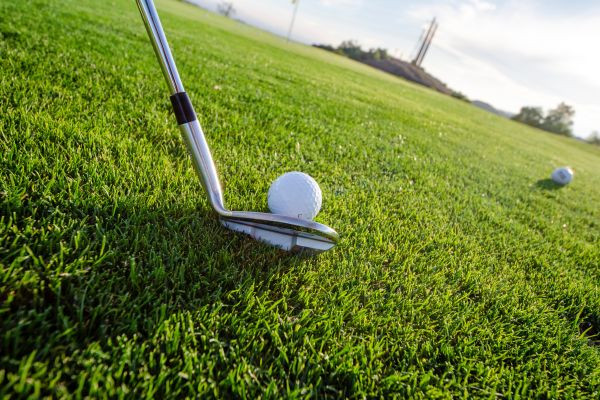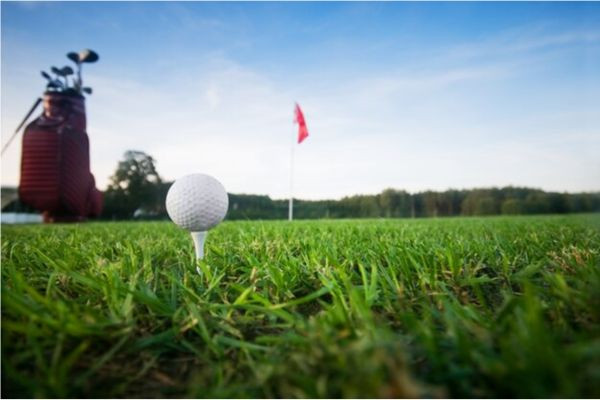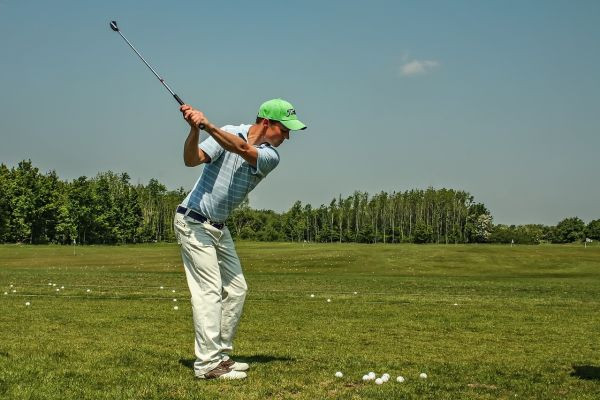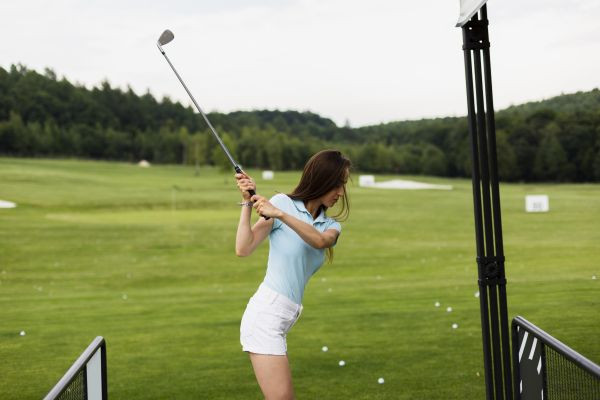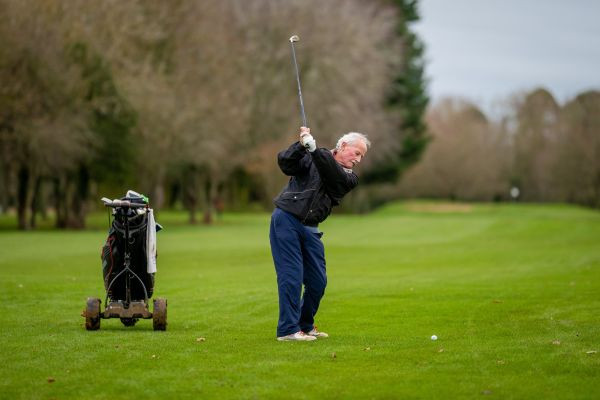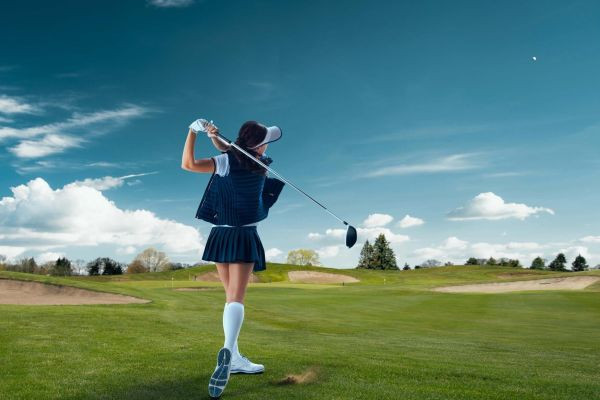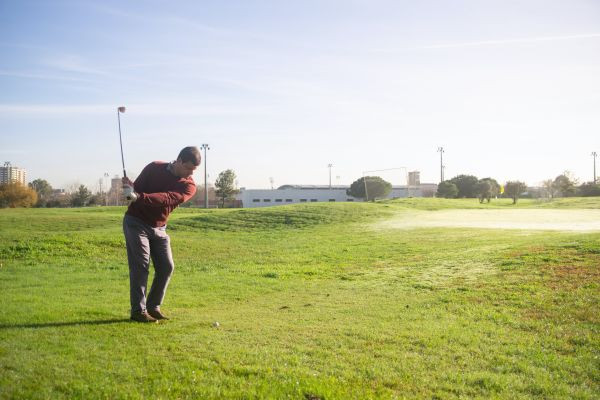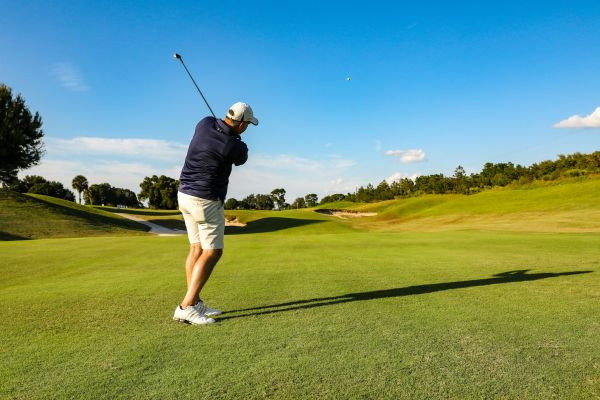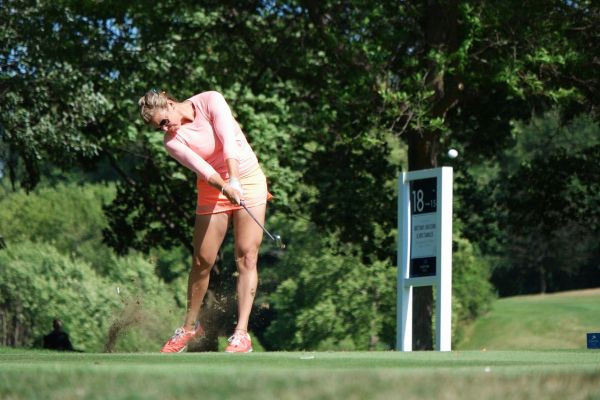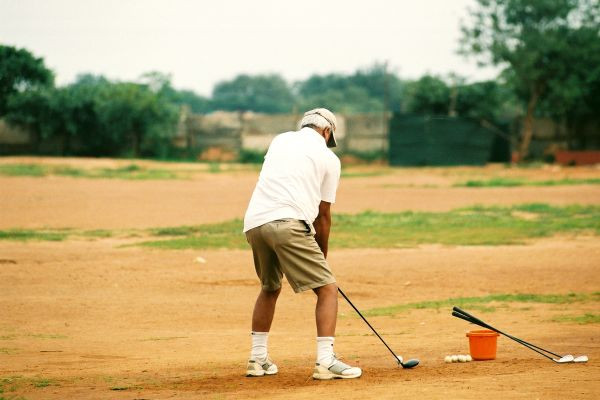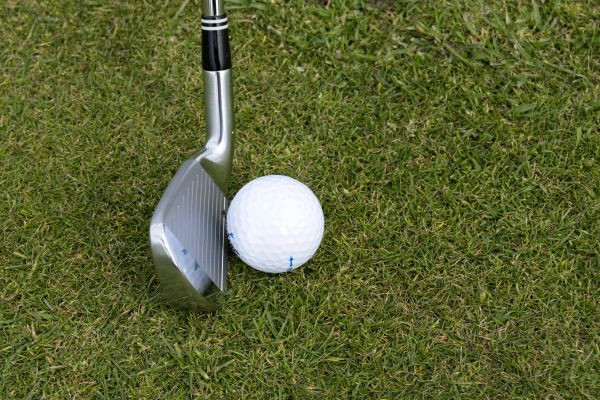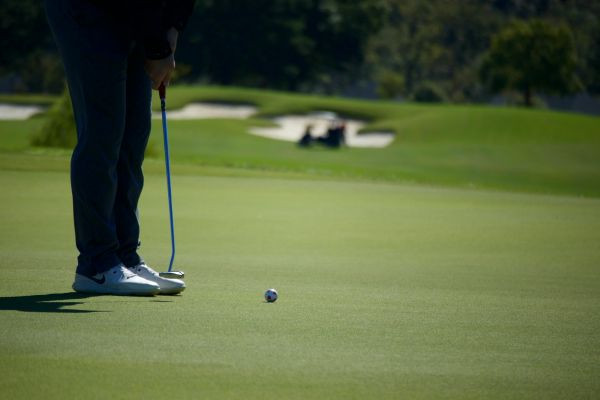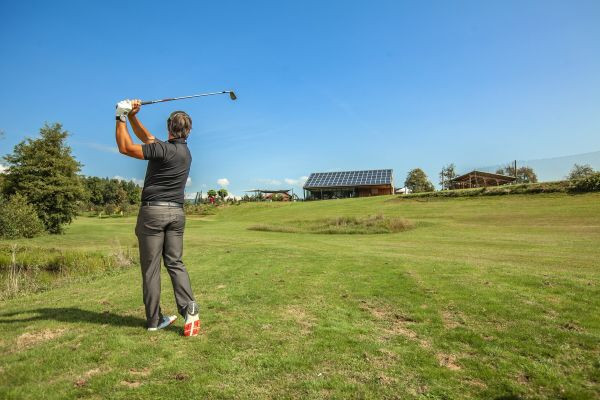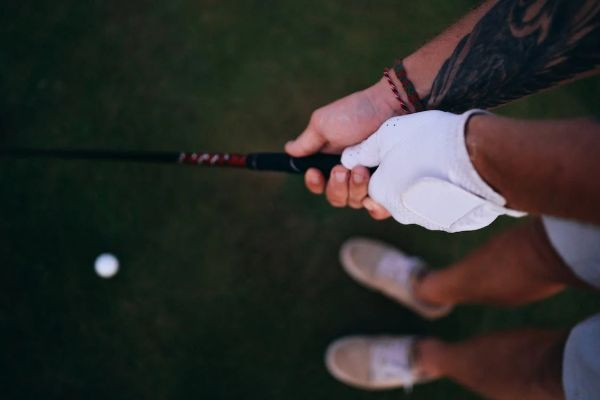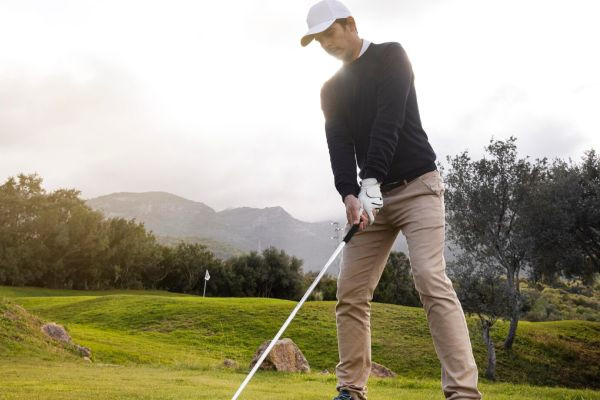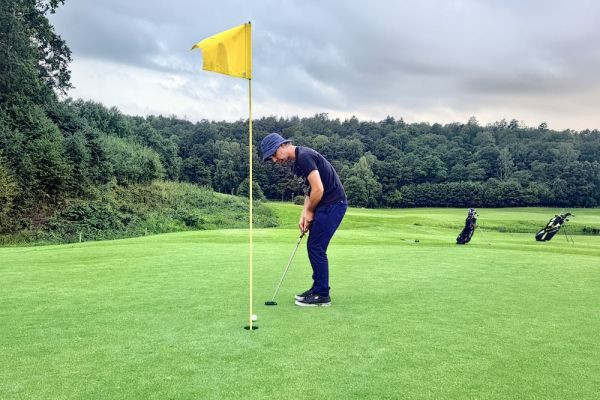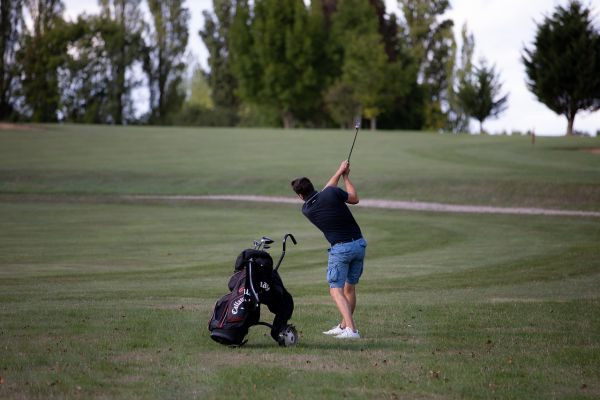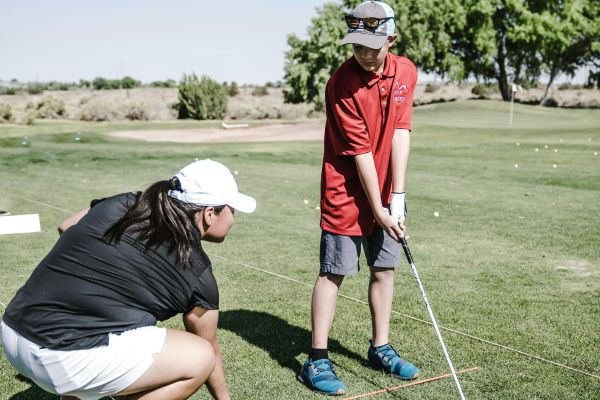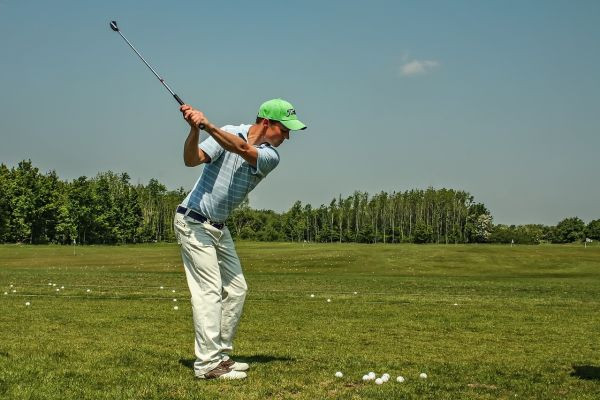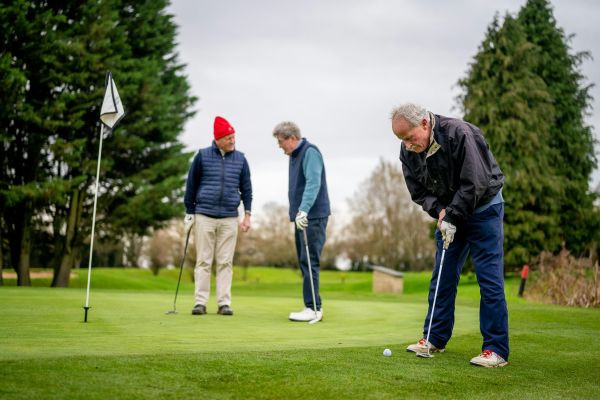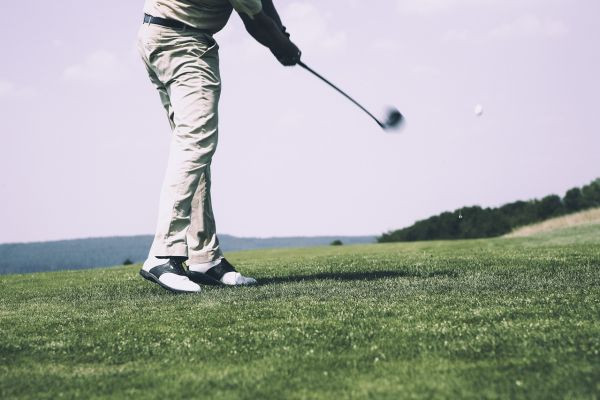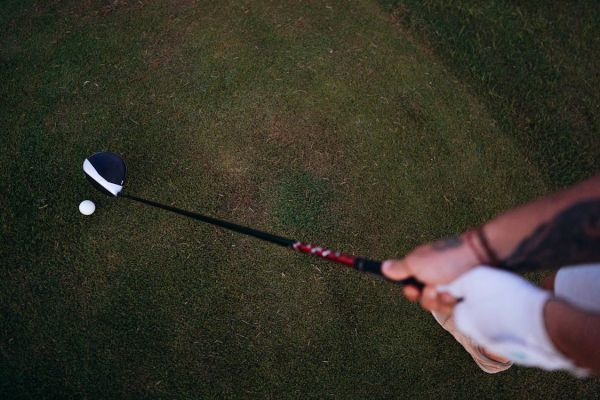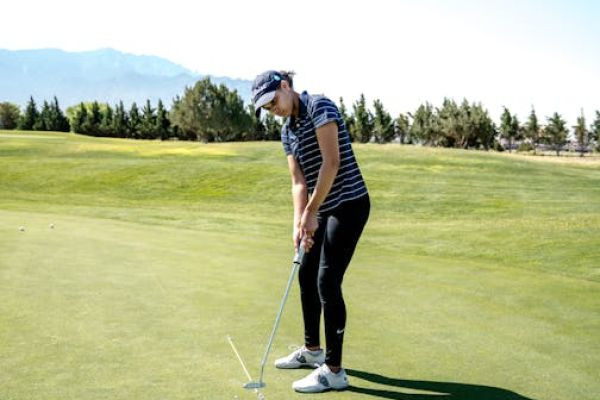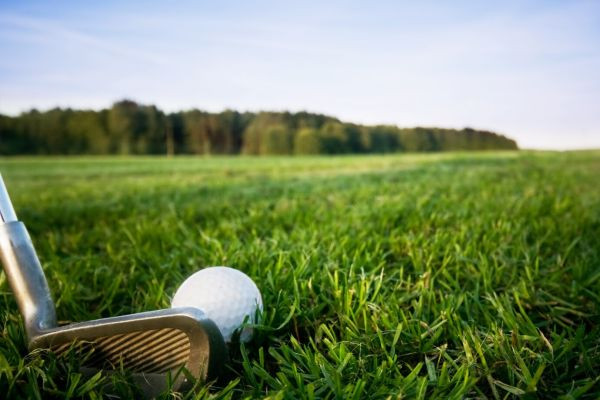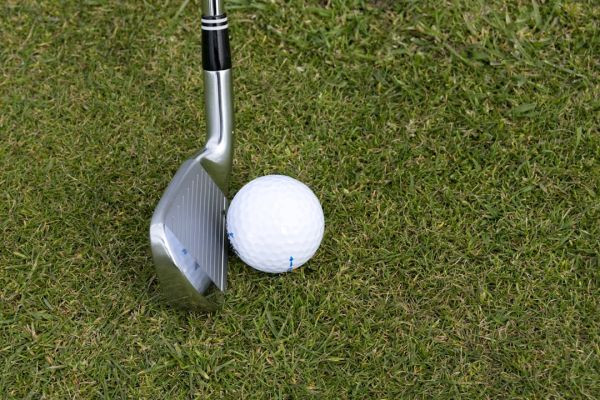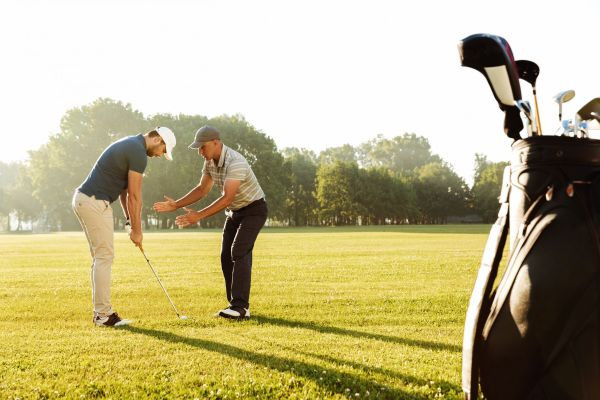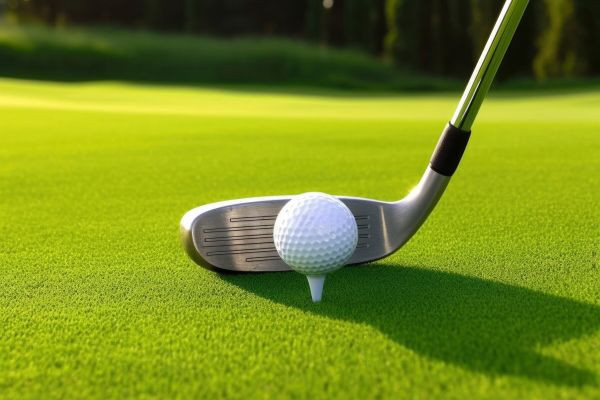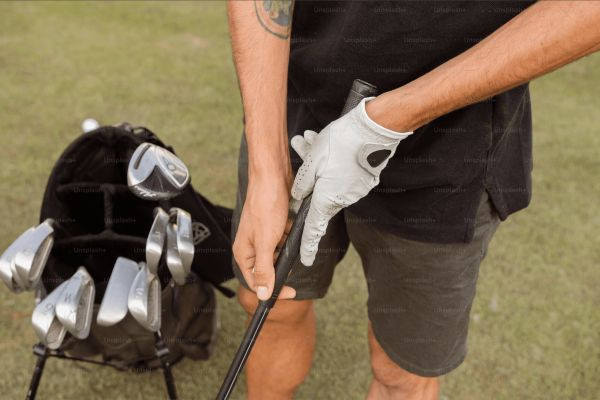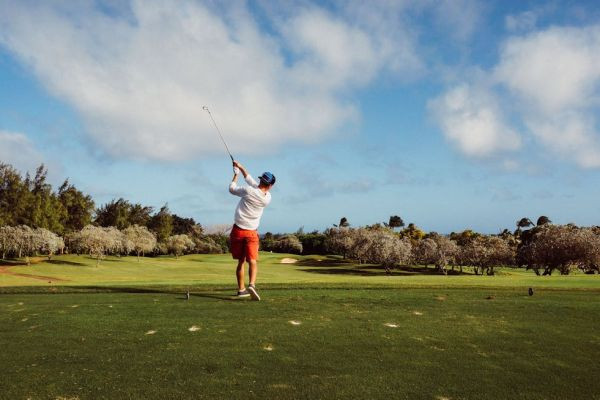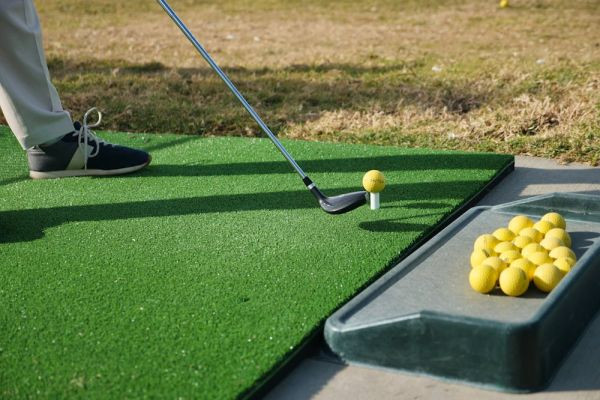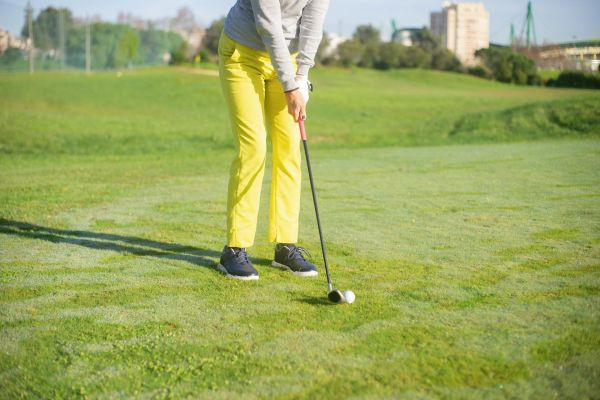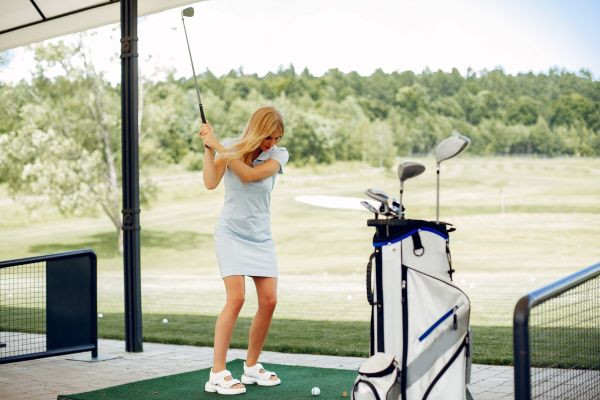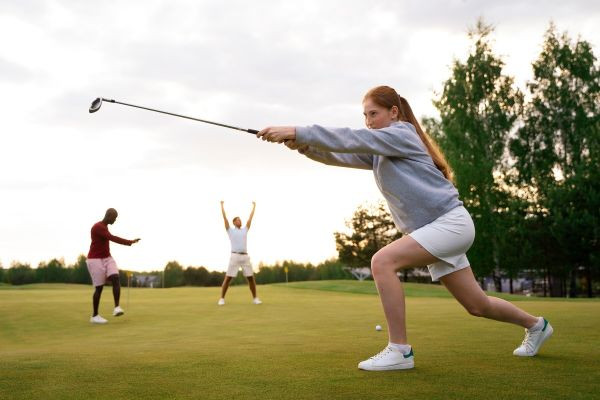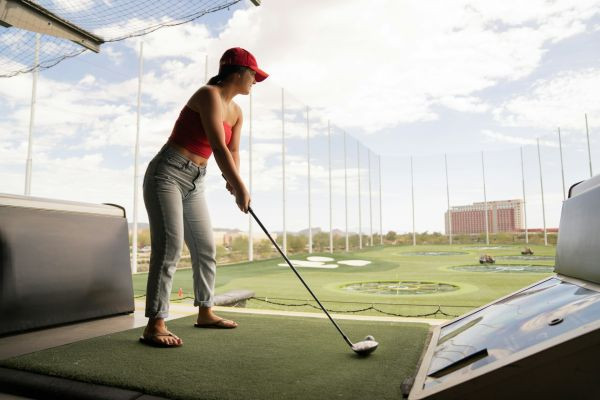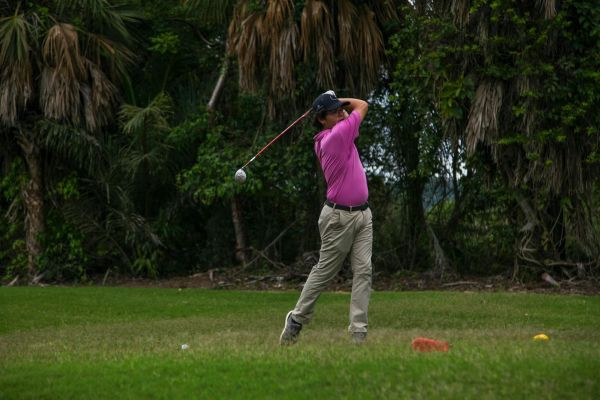How to Master the Perfect Golf Grip to Transform Your Golf Game
Welcome to the journey of mastering the perfect golf grip, an often overlooked but crucial aspect of any golfer's game. The right grip is the bedrock of your swing, influencing everything from the tra..
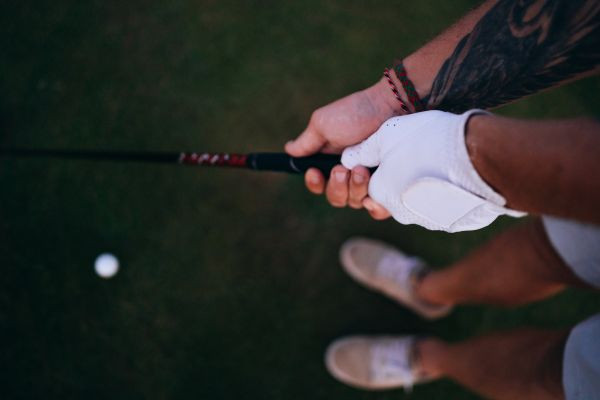
Welcome to the journey of mastering the perfect golf grip, an often overlooked but crucial aspect of any golfer's game. The right grip is the bedrock of your swing, influencing everything from the trajectory of the ball to its speed and spin. Understanding the importance of a proper grip will set you on a path to lower scores and more enjoyable rounds.
Fundamentals of the Golf Grip
Anatomy of a Golf Grip
Understanding the anatomy of a golf grip is crucial for every golfer, regardless of skill level. Your hands are the only point of contact with the club, making the way you hold it incredibly significant.
A good grip aligns the club with your forearms, ensuring that the force you exert is directly transferred to the clubhead and, subsequently, to the ball. It involves the correct placement of your fingers, thumbs, and palms. The fingers should cradle the club rather than squeeze it, with the butt of the club resting against the fleshy base of your thumb on your lead hand. Your trailing hand then complements this position, usually with the thumb of the lead hand fitting snugly into the palm or against the lifeline of the trailing hand.
Moreover, the knuckles and the "V" shapes formed by your thumb and forefinger on each hand are good indicators of grip correctness. Ideally, you should see two knuckles on your lead hand when you look down at your grip. These small details contribute significantly to the overall effectiveness of your swing.
Grip Pressure and Its Effects
The pressure you exert on the grip is often likened to holding a bird or a tube of toothpaste without squeezing out the contents. It's a delicate balance that can have a profound impact on your swing. A grip that's too tight can lead to tension throughout your arms and shoulders, impeding the natural fluidity and flexibility required for an effective swing. This tension can decrease the speed and fluidity of your swing, leading to shorter and less accurate shots. On the other hand, a grip that's too loose might feel more comfortable but offers less control, making it more likely for the club to twist at impact, leading to inconsistent shots and a loss of direction and power.
Striking the right balance in grip pressure is key. This optimal pressure allows for maximum control without sacrificing the natural flow of your swing. A good way to find this balance is to practice gripping the club at different pressures and then swinging to observe the effects. Over time, you'll develop a feel for the just-right amount of pressure that produces the best blend of control, power, and precision in your shots.
The Left Hand's Role
Positioning and Mistakes to Avoid
In the realm of right-handed golf the left hand is often considered the director of the swing. Its placement on the club sets the tone for the entire motion. The ideal position is in the fingers not resting in the palm. This finger placement is crucial because it creates a more substantial hinge which is essential for generating power and control. The palm might feel more secure but it restricts the necessary wrist movement that adds dynamism to your swing.
Many amateurs fall prey to the pitfalls of an overly weak or strong left-hand grip. A grip that's too strong (with the hand turned too far right) often leads to hooks where the ball drastically curves to the left. Conversely a weak grip (with the hand turned too far left) can produce slices where the ball veers right. Finding the sweet spot between these extremes is critical. It's a nuanced balance that can dramatically affect the ball's flight path and should be adjusted according to your unique swing tendencies and desired shot shape.
The Significance of the 'Red Triangle'
The 'red triangle' , the area formed between your left thumb and forefinger, serves as a visual cue for proper hand placement. This triangle is more than just a shape; it's a guide to ensuring your grip will allow for a potent wrist hinge. Ideally this triangle points towards your right shoulder for right-handed golfers. This orientation is crucial as it sets the stage for a dynamic swing allowing for a full range of motion and the creation of leverage and power.
Right Hand Dynamics
Synergy with the Left Hand
While the left hand sets the stage the right hand should not be overlooked. It must work in tandem with the left enhancing control and adding finesse to the swing. Your right hand wraps around the club complementing the left's position. The fingers of the right hand are crucial for stability and power with the pinky finger often interlocking or overlapping with the left hand to unify the grip.
The pressure exerted by the right hand should mirror that of the left creating a harmonious and balanced grip. This balance is vital; too much pressure in one hand can throw off the entire swing. The right hand's role is to support and guide enhancing the motion initiated by the left hand not overpowering it.
Pressure Points and Their Impact
The last three fingers of your right hand hold a significant role in maintaining grip through the swing. These fingers, particularly the pinky ring and middle fingers are key in generating the whip-like motion that increases clubhead speed at the point of impact. The pressure in these fingers can be the difference between a sluggish uncontrolled swing and a powerful precise drive. Understanding and utilizing these pressure points can lead to more consistent shots and an overall improvement in your game.
Combining the Left and Right Hand

Achieving Harmony and Control
The magic of a great golf swing lies in the seamless union of the left and right hands. This harmony is akin to a well-conducted orchestra where every element works in concert to produce a beautiful outcome. When your hands work together flawlessly the result is a swing that is both powerful and controlled, a swing that sends the ball flying precisely where you intend it to go. This unity is about more than just physical placement; it's about the symbiotic relationship between pressure and control. Each hand has a role to play and when they perform those roles perfectly the result is a swing that feels natural effortless and immensely effective.
Finding this balance is a personal journey. It's about understanding the unique mechanics of your own body and swing and then adjusting your grip to facilitate the best possible interaction between your hands. It's a process that might require some patience and experimentation but the reward is a grip that feels like an extension of your own body, one that enhances every shot you take.
Grip Variations and Their Effects
Strong vs. Weak Grips
The strength of your grip can significantly influence the path and flight of the ball. A strong grip where the hands are rotated more towards your trailing side tends to close the clubface at impact which can counteract a slice. On the other hand a weak grip with the hands rotated towards your lead side opens the clubface and can help correct a hook. Understanding the relationship between grip strength and ball flight is crucial. It allows you to make informed adjustments based on your natural tendencies and the specific challenges you face on the course.
Personalizing Your Grip
While the basics of a good grip are universal the finer details should be tailored to your individual needs and preferences. Don't be bound by one-size-fits-all solutions. Feel free to experiment with slight modifications until you discover the grip that feels most natural and produces the best results. The right grip for you is one that complements your natural swing, enhances your control and improves the consistency and power of your shots.
Advanced Grip Techniques
Hinging for Power
The wrists play a pivotal role in generating power in your swing. By mastering the art of wrist hinging with a properly positioned grip you can unlock significant increases in clubhead speed and as a result shot distance. The hinge allows your wrists to act like a whip storing energy as you swing back and releasing it explosively at impact. A good grip facilitates this hinging ensuring that the power generated by your body is efficiently transferred to the club and ultimately to the ball.
The Role of the Fingers
The fingers, particularly the last three of each hand are the unsung heroes of a powerful controlled golf grip. They must hold the club securely without squeezing it to death. This secure but gentle hold allows for the necessary wrist hinge and provides the stability needed to control the club throughout the swing. The fingers should feel like they are guiding the club not fighting against it. When positioned and used correctly they enhance every aspect of your swing from the backswing to the follow-through.
Common Grip Mistakes
A lot of the issues in golf can be traced back to problems with grip. These problems often show up as slicing, hooking or a general decrease in distance and accuracy.
The first step to fixing these issues is identifying them. Do your shots consistently veer off to one side? Does the club feel unstable or uncomfortable in your hands? These signs could indicate that your grip needs some adjustments. It's possible that your grip is too strong causing the clubface to close early and resulting in a hook. On the other hand it might be too weak leaving the clubface open at impact and causing a slice.
By observing the outcomes of your shots and how the club feels in your hands you can start recognizing patterns and making the changes. Remember, even small adjustments to your grip can have an impact on how effective your swing is.
Practice Drills for Perfecting Your Grip
Routine Exercises
Developing a strong and effective grip requires practice. There are exercises specifically designed to reinforce a grip. For example you can practice gripping the club before every shot. Focus on placing your hands each time.
You can also try using training tools specifically designed to help you position your hands correctly.
Doing exercises at home such as holding a ball or dowel can also reinforce the sensation of having a proper grip. The important thing is to practice mindfully. With time the correct grip will come naturally. Until then, consistent and mindful repetition is your ally.
Measuring Improvement
Monitoring your progress is vital for maintaining motivation and achieving improvement. Pay attention to how consistent and accurate your shots are. As your grip gets better you should notice control over the ball's direction and flight path. Your shots may also start feeling more solid as the club starts making contact with the ball. These are indications that both your grip and overall swing are improving. Consider keeping a journal or using a golf app to track your observations and progress, over time.
Transitioning from Practice to Play
Applying Skills on the Course
Moving from practice sessions to playing on a golf course can sometimes be challenging. The key is to maintain the confident grip that you've been practicing.
It's completely normal to experience a bit of pressure while playing golf. Try not to let it affect your hold on the club. If you happen to notice any issues don't hesitate to make adjustments. Sometimes even a small tweak can make all the difference, in bringing your practice onto the course.
Mental and Physical Preparation
The mental and physical aspects of golf are closely connected. When there's tension in your mind it often translates into tension in your body, which can quickly undermine the practiced grip. To avoid this, focus on staying relaxed and confident. Take breaths, visualize shots and have faith in the hard work you've put into practicing. Remember that a strong grip forms the foundation for a swing so give it the attention and respect it deserves; everything else will fall into place with your swing.
Troubleshooting Common Issues
Adjusting Grip in Different Conditions
Golf is a game that involves variables and conditions on the course that can change rapidly. Whether it's a downpour making your club slippery or an awkward lie requiring an adjustment in approach, having the ability to subtly adapt your grip is a skill. Practice adjusting your grip under circumstances at the range or even, at home.
The more you get used to making these adjustments the better equipped you will be to handle any challenges that come your way in the course.
When to Seek Professional Help
While it can be effective to diagnose and adjust on your own there are times when an outside perspective becomes necessary. If you're struggling with your grip despite your efforts it might be worth considering getting help from a professional. A qualified instructor can offer personalized insights and corrections often spotting issues that you may have missed on your own. Even a few sessions can make a difference by providing the guidance and confidence needed to enhance both your grip and game.
Maintaining Your Perfect Grip
Long-Term Strategies
Achieving a grip is an achievement in itself but ensuring its longevity requires ongoing commitment. Your body changes over time as does your game. Even small shifts can impact your grip. That's why it's crucial to develop long term strategies for maintaining a grip. This involves incorporating grip checks into your practice routine like how you would focus on improving your swing or putting skills.
You might want to consider practicing your grip before every shot or setting aside some practice time specifically for improving your grip.
Moreover it's worth considering the idea of establishing milestones for conducting, in depth assessments. For instance you could schedule a session dedicated to analyzing your grip. During this session you can compare your grip to photos or videos of when your grip was at its peak performance. Additionally staying updated on techniques and any shifts in the consensus regarding what constitutes a grip is beneficial. The world of golf is constantly evolving and what may be deemed optimal today could change tomorrow.
Regular Check-Ups and Adjustments
Similar to any tuned aspect of your golf game your grip can gradually drift over time. It might involve a loosening of your fingers, an adjustment in hand position or a change in pressure that goes unnoticed. This is why it's crucial to prioritize check ups. These check ups can be as simple as reviewing your grip before each shot or more comprehensive examination, during practice sessions. Alternatively you may also consider seeking guidance from a coach who can provide an external perspective.
When assessing your grip, pay attention to any changes that may have occurred. Are your hands properly positioned? Is the pressure consistent and suitable? Are all fingers correctly placed? If you notice any changes, don't get discouraged. It's completely normal in the game of golf. The important thing is to make the adaptations and keep practicing until the correct grip feels natural again.
Conclusion
Mastering the art of a golf grip is a journey that involves learning and adaptation. It's an aspect of your game that deserves as much attention and care as your swing or putting. By dedicating time to understanding the intricacies of a grip, practicing regularly and being vigilant about maintaining it you'll discover that your grip isn't a component of your game-- it forms the foundation upon which your entire performance is built. So keep striving, making adjustments when needed and perfecting that grip. The results will be worth it as you witness your shots flying farther straighter and more consistently, than before.
Frequently Asked Questions (FAQs)
How often should I practice my golf grip?
You should incorporate practicing your golf grip into every practice session like any aspect of the game. Ideally perform grip checks. Make adjustments before each round you play.
Just spending a minute solely focusing on how you hold the golf club can make a significant difference.
Can the perfect golf grip vary from player to player?
Absolutely. While there are guidelines for a grip the "perfect" grip is highly individualized. Factors like hand size, finger length and personal comfort all come into play. The important thing is that your grip feels natural and allows you to swing the club with power and accuracy.
What's the most common mistake beginners make with their grip?
Beginners often make the mistake of gripping the club tightly believing it provides them with more control. However this usually leads to tension throughout their swing reducing flexibility and smoothness. Another common error is not placing their hands correctly on the club resulting in a grip that's either too weak or too strong influencing how the ball flies.
How do I know if my grip is too strong or too weak?
If your shots tend to curve left it's an indication that your grip might be too strong. On the other hand if your shots slice to the right consistently it suggests that your grip might be too weak. Pay attention to both directions. Curvature when analyzing your shots. If you notice a pattern like this it could be time to make adjustments, in your grip strength.
What are some signs that my grip is improving?
You'll notice signs of improvement when your ball flight becomes more consistent and your shots go where you want them to. You feel a sense of control and comfort. Additionally you may find that your hands and forearms feel more relaxed throughout the swing.
Are there any tools or devices that can help me perfect my grip?
Certainly! There are tools and devices specifically designed to help golfers enhance their grip. Grip trainers can guide your hands into the position while pressure sensors and smart clubs provide feedback on the strength and consistency of your grip. Everyday items, like a ball or towel can be utilized for practice.
How do I maintain a good grip under pressure, like in a tournament?
When it comes to maintaining a grip under pressure practice is key. The more you practice and ingrain a grip into your muscle memory the better equipped you'll be to maintain it when nerves come into play. During tournaments focus on following your routine, take breaths to stay calm and trust in the skills honed through practice. If tension starts creeping, take a moment to reset yourself mentally and refocus on the task at hand.



